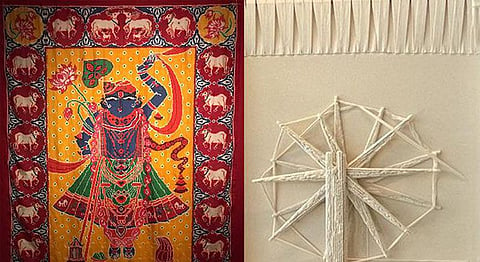
- HOMEGROWN WORLD
- #HGCREATORS
- #HGEXPLORE
- #HGVOICES
- #HGSHOP
- CAREERS
- ABOUT US
- CONTACT US

Traditional Indian textiles are weaves of unspoken history intricately woven into the DNA of the country. To visit a different era of Indian history one can pick up the textiles crafted at the time to dissect the cultural ethos; these heritage pieces have an enduring relevance beyond time and space.
What makes these weaves truly unique are the diverse expressions of design in India, incorporating styles and patterns from across the wide range of traditional crafts passed down through generations. As spectators of this culture, we are now getting a chance to witness and interact with a curated archive showcasing both new and old pieces of textiles.
Sutr Santati (continuation of the thread), is an exhibition currently on display at the National Museum, Delhi. With over 100 pieces and 75 participants, the curation brings together the past, present and future of the Indian fashion industry. While the chatter around conscious materials continues to grow, such displays bring forward the real faces of homegrown labels working with handspun textiles and heritage weaves.
The curator behind this exhibition, Lavina Baldota is a textile revivalist and one of the leading lights in the space of conserving Indian crafts. Her efforts have provided a platform to acclaimed designers and students alike, the experience is designed to captivate the audience with the use of heritage textiles presented in a contemporary language.
Celebrating the 75th year of Indian independence the exhibition sheds light on the efforts of the artisanal community, honouring craftspeople from pan India who play a significant role in keeping these traditions alive; taking forward the ongoing dialogues around identifying the real faces of change behind conscious art and fashion pieces.
Naming a few presenters, the exhibition will see Bun Kar (Bihar), Crafts Council Of Weavers & Artisans, Chanakya School of Crafts and the Kiran Foundation. Independent labels such as Raffughar and Medium have contributed pieces while other textile revivalists and designers from the industry have also co-curated Sutr Santati.
The doors to this curatorial endeavour will be open at the National Museum, Janpath, Delhi until the 20th of September.
If you enjoyed reading this, we also suggest:
